Examples (Revised) - Chapter 10 - Circles - Ncert Solutions class 9 - Maths
Updated On 26-08-2025 By Lithanya
You can Download the Examples (Revised) - Chapter 10 - Circles - Ncert Solutions class 9 - Maths with expert answers for all chapters. Perfect for Tamil & English Medium students to revise the syllabus and score more marks in board exams. Download and share it with your friends
Share this to Friend on WhatsApp
Chapter 9: Circles - NCERT Solutions for Class 9 Maths | Expert Answers & PDF
Example 1 :
If two intersecting chords of a circle make equal angles with the diameter passing through their point of intersection, prove that the chords are equal.
Solution :
Given that $\mathrm{AB}$ and $\mathrm{CD}$ are two chords of a circle, with centre $O$ intersecting at a point E. PQ is a diameter through $\mathrm{E}$, such that $\angle \mathrm{AEQ}=\angle \mathrm{DEQ}$ (see Fig.9.11). You have to prove that $A B=C D$. Draw perpendiculars OL and OM on chords $\mathrm{AB}$ and CD, respectively. Now
$
\begin{aligned}
\angle \mathrm{LOE}= & 180^{\circ}-90^{\circ}-\angle \mathrm{LEO}=90^{\circ}-\angle \mathrm{LEO} \\
& \quad \text { (Angle sum property of a triangle) } \\
= & 90^{\circ}-\angle \mathrm{AEQ}=90^{\circ}-\angle \mathrm{DEQ} \\
= & 90^{\circ}-\angle \mathrm{MEO}=\angle \mathrm{MOE}
\end{aligned}
$
.png)
In triangles OLE and OME,
.png)
Example 2 :
In Fig. 9.19, AB is a diameter of the circle, $\mathrm{CD}$ is a chord equal to the radius of the circle. $\mathrm{AC}$ and $\mathrm{BD}$ when extended intersect at a point E. Prove that $\angle \mathrm{AEB}=60^{\circ}$.
Solution : Join OC, OD and BC.
Triangle ODC is equilateral
(Why?)
.png)
Therefore, $\angle \mathrm{COD}=60^{\circ}$
Now,
$
\angle \mathrm{CBD}=\frac{1}{2} \angle \mathrm{COD}
$
(Theorem 9.7)
This gives $\angle \mathrm{CBD}=30^{\circ}$
Again, $\quad \angle \mathrm{ACB}=90^{\circ}$
(Why?)
So, $\quad \angle \mathrm{BCE}=180^{\circ}-\angle \mathrm{ACB}=90^{\circ}$
Example 3 :
In Fig 9.20, ABCD is a cyclic quadrilateral in which $\mathrm{AC}$ and $\mathrm{BD}$ are its diagonals. If $\angle \mathrm{DBC}=55^{\circ}$ and $\angle \mathrm{BAC}=45^{\circ}$, find $\angle \mathrm{BCD}$.
Solution :
$
\angle \mathrm{CAD}=\angle \mathrm{DBC}=55^{\circ}
$
(Angles in the same segment)
Therefore,
$
\begin{aligned}
\angle \mathrm{DAB} & =\angle \mathrm{CAD}+\angle \mathrm{BAC} \\
& =55^{\circ}+45^{\circ}=100^{\circ}
\end{aligned}
$
But $\angle \mathrm{DAB}+\angle \mathrm{BCD}=180^{\circ}$
(Opposite angles of a cyclic quadrilateral)
.png)
$
\angle \mathrm{BCD}=180^{\circ}-100^{\circ}=80^{\circ}
$
Example 4 :
Two circles intersect at two points A and $\mathrm{B} . \mathrm{AD}$ and $\mathrm{AC}$ are diameters to the two circles (see Fig. 9.21). Prove that B lies on the line segment DC.
Solution :
Join AB.
.png)
$
\begin{aligned}
& \angle \mathrm{ABD}=90^{\circ} \quad \text { (Angle in a semicircle) } \\
& \angle \mathrm{ABC}=90^{\circ} \quad \text { (Angle in a semicircle) }
\end{aligned}
$
So, $\angle \mathrm{ABD}+\angle \mathrm{ABC}=90^{\circ}+90^{\circ}=180^{\circ}$
Therefore, DBC is a line. That is B lies on the line segment DC.
Example 5 :
Prove that the quadrilateral formed (if possible) by the internal angle bisectors of any quadrilateral is cyclic.
Solution :
In Fig. 9.22, ABCD is a quadrilateral in which the angle bisectors $\mathrm{AH}, \mathrm{BF}, \mathrm{CF}$ and $\mathrm{DH}$ of internal angles $\mathrm{A}, \mathrm{B}, \mathrm{C}$ and $\mathrm{D}$ respectively form a quadrilateral EFGH.
Now, $\angle \mathrm{FEH}=\angle \mathrm{AEB}=180^{\circ}-\angle \mathrm{EAB}-\angle \mathrm{EBA}$ (Why?)
.png)
and $\angle \mathrm{FGH}=\angle \mathrm{CGD}=180^{\circ}-\angle \mathrm{GCD}-\angle \mathrm{GDC}$ (Why?)
$
=180^{\circ}-\frac{1}{2}(\angle \mathrm{C}+\angle \mathrm{D})
$
Therefore, $\angle \mathrm{FEH}+\angle \mathrm{FGH}=180^{\circ}-\frac{1}{2}(\angle \mathrm{A}+\angle \mathrm{B})+180^{\circ}-\frac{1}{2}(\angle \mathrm{C}+\angle \mathrm{D})$
$
\begin{aligned}
& =360^{\circ}-\frac{1}{2}(\angle \mathrm{A}+\angle \mathrm{B}+\angle \mathrm{C}+\angle \mathrm{D})=360^{\circ}-\frac{1}{2} \times 360^{\circ} \\
& =360^{\circ}-180^{\circ}=180^{\circ}
\end{aligned}
$
Therefore, by Theorem 9.11 , the quadrilateral $\mathrm{EFGH}$ is cyclic.




